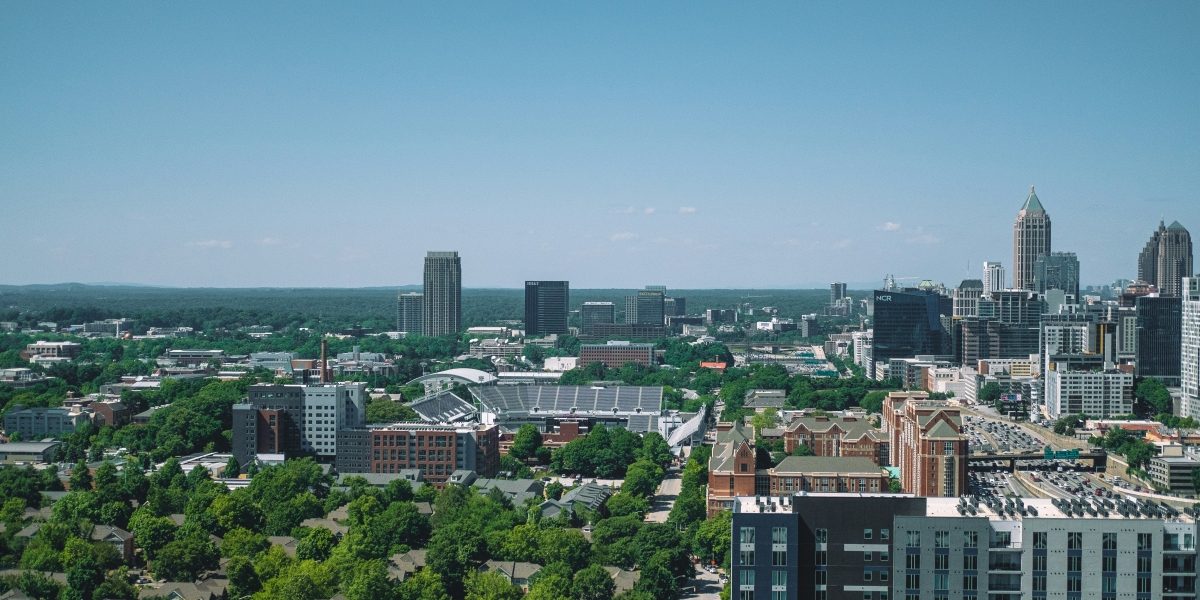Metropolitan woodlands across Virginia are gradually transforming communities through the dedication of Tree Stewards—trained volunteers who care for and preserve trees in cities and towns. These efforts are contributing to the beautification of neighborhoods while providing important environmental benefits such as stormwater management, improved air quality, and temperature regulation.
With support from local governments, nonprofits, and educational institutions, Tree Stewards are making a lasting impact on the ecological and social fabric of urban areas. From Alexandria to Roanoke, their contributions are shaping greener, healthier cities, while offering residents a meaningful way to connect with nature and their neighbors, as Amy Hannah Johnston explains.
Virginia Tree Stewards
Tree Stewards are trained volunteers dedicated to the care and preservation of urban trees across Virginia. They help support healthier cities by planting, pruning, and monitoring trees in neighborhoods, parks, and other public spaces. Their work is often coordinated with local governments and supported by statewide programs that provide training.
In cities like Alexandria and Charlottesville, Tree Stewards are considered an integral part of urban forestry management. These volunteers not only maintain existing trees but also help plan for future canopy growth in areas experiencing rapid development or environmental stress. Their efforts bring about long-term ecological benefits while encouraging community involvement in local green spaces.
The Importance of Trees
Trees play a vital role in improving the quality of life throughout Virginia. They help manage stormwater, reduce air pollution, and provide shade that helps reduce the heat on overheated pavement and buildings. In dense urban areas, this natural cooling effect can reduce energy consumption and mitigate the urban heat island phenomenon.
In places like Richmond and Northern Virginia, expanded tree coverage has been linked to improved air quality and reduced flood risk during heavy rains. Trees also offer valuable habitat for birds and pollinators.
How Tree Stewards Contribute
Tree Stewards take on a hands-on role in maintaining the health of urban woodlands. They regularly prune young trees to encourage strong growth, remove invasive vines or pests, and track the condition of trees over time. Their work complements municipal crews by providing consistent care and attention that might not always be available with city budgets.
In Arlington, volunteers have assisted in restoring the tree canopy in older neighborhoods where aging trees were lost to storms or disease. By planting native species and educating residents on proper tree care, they’ve contributed to creating a healthier and more resilient urban forest for future generations. Their efforts are often timed with community events, making tree planting a social activity.
Training and Skills Development
Becoming a Tree Steward in Virginia involves more than just enthusiasm for greenery—it requires structured training and a commitment to learning. Programs typically cover topics like native tree identification, proper pruning techniques, pest management, and soil health. This foundation equips volunteers with the knowledge needed to make informed decisions in the field. Many programs also emphasize communication skills, helping stewards engage effectively with the public.
In many counties, training is offered in collaboration with universities or environmental nonprofits. Fairfax County, among others, partners with the Virginia Cooperative Extension to offer a comprehensive curriculum that combines classroom instruction with hands-on experience. These partnerships ensure that stewards are well-prepared to support sustainable urban forestry efforts.
Community Engagement and Local Benefits
Tree Stewards often serve as catalysts for stronger community ties. Their work naturally draws people together, whether through neighborhood planting days, educational workshops, or simple conversations sparked on a morning walk. The visibility of their efforts helps residents recognize trees not just as background scenery, but as shared community assets.
In Roanoke, residents have reported how tree planting projects revitalized previously overlooked streets. The addition of greenery brought not only shade but also renewed interest in community upkeep. Tree Stewards in such areas frequently become trusted voices in local environmental discussions, helping to shape priorities around public land use and sustainability.
Ways to Support or Participate
Anyone interested in supporting urban trees across Virginia has multiple paths to get involved. Joining a local Tree Steward program is one of the most direct ways, and many cities offer seasonal training or orientation sessions. Even without becoming a formal volunteer, individuals can assist by attending educational events, helping water newly planted trees, or spreading awareness about the value of urban forests.
Organizations like Trees Virginia and local master gardener programs offer resources and opportunities year-round. Whether someone donates time, money, or simply advocates for tree preservation in their neighborhood, every contribution can help strengthen the green infrastructure that supports healthier, more livable communities. Encouragement from neighbors may inspire others to join, expanding the circle of impact.
Disclaimer: The content is for informational purposes only and does not guarantee any specific outcomes. Readers are encouraged to seek local opportunities and engage with trusted organizations for more details on supporting urban forestry initiatives.

















